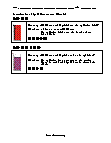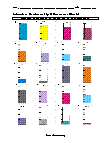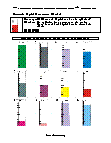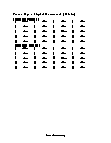Liquid Measurement Metric Worksheets
How to Read Measurements with Graduated Cylinders - Graduated cylinders are one of the most common measuring devices. These cylinders measure the volume of liquid, and they come in a variety of different sizes that measure the different degrees of accuracy. Some are made of glass, some of the borosilicate, and others are made of plastic. So, how to read measurements with graduated cylinders? Step 1: The Gradations - Before you start using a graduated cylinder, you have to learn the gradations. It is the most basic step in the process. A graduated cylinder has lines on it that show measurement intervals. Few of these lines have numbers on it, while others are blank lines. These cylinders use the metric system, and the measurements are in milliliters, mL, or ml. Step 2: Measurement Interval - The next step is to determine the measurement interval. You can do that by counting the number of smaller divisions. Each marked interval is equal to 1ml, and between two interval lines, there were 5 smaller divisions. You can divide 1 by 5, and each smaller division equals 0.2ml. Step 3: Finding & Reading Meniscus - The third step is to find and read the meniscus. The meniscus is a curved surface which takes place due to the cohesion between the molecules of the liquid. There are two types of a meniscus, upwards and downwards. It depends upon the type of liquid. Remember that reading is to be taken from the center of the meniscus. Step 4: The Final Reading - You are now ready to take the final reading!
-
Basic Lesson
Introduces metric unit conversion as well as reading cylinders for liquid measurement. How many milliliters of liquid does the cylinder hold? Solution: 1 liter = 1000 milliliters. The cylinder hold 1000 mls (scale shown left side).
View worksheet -
Independent Practice 1
Students practice with 20 cylinder measurement problems. The answers can be found below. How many milliliters of liquid are in each cylinder?
View worksheet -
Independent Practice 2
Use a liter as a marked reference for students to work off of. The answers can be found below.
View worksheet -
Homework Worksheet
Uses larger cylinders than the lessons and practice sheets. Also provides a practice problem.
View worksheet
Why No Metric System?
The United States is one of the last countries without the decimal metric system as its universal measuring system. In 1792, the Academy of Sciences in Paris gave Delambre and Mechain the task of unifying the world with a single system of measurement.







